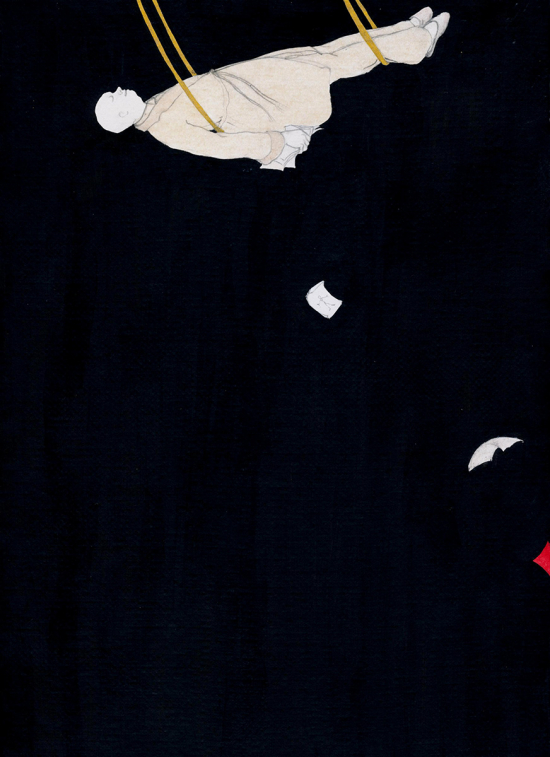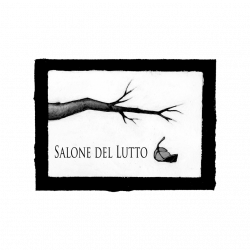
Tiziana Fusari, Comédie humaine, 2008, immagine di copertina di Rewind, di Matteo Mattia, Quodlibet, 2014.
When visiting an exhibition, you certainly do not expect it to end up in tears and hugs, smiles and memories.
I was taken by surprise by the finissage of the retrospective that gallery owner Silvana dedicated to her friend Tiziana Fusari, an artist from Abruzzo who recently passed away. I wasn’t familiar with her works but the title of a series, La Comédie Humaine, urged me to participate in the exhibition’s closing evening last spring.
Precious small works, made on canvas, golden paper, gauze, human figures hanging from ropes (a swing?) with an everyday object in their hand – a book, a toothbrush or a pen. All these people smile as they swing, ready to face anything that might happen to them with the grace needed to relieve fatigue.
I was struck by the merciless simplicity of Tiziana’s language with which she describes some ferocious aspects of life, especially the life of females (I don’t mean women, I really mean females, little girls, mothers, old women) but I am not going to focus on her art. The main authority on her work, Mauro Mattia, has already dealt with it in a detailed and flawless way in his book Rewind, an essential document for anyone who wishes to know this artist.
I recollect what I have witnessed that evening.
A goodbye, an emotional recollection by people who have known Tiziana and who recounted her work, her irony, her habits.
It was more than a retrospective: something of a vigil, a lay and heart-rending tribute. Her photographs were on display and the lights were unusually low for a gallery.
We drank wine, listened to some music and talked with the artist’s husband and with her sister who, in everybody’s opinion, looks more and more like Tiziana.
Tiziana lived and worked in L’Aquila until 2009 when, though forced to leave her hometown after the earthquake, she started new series of works, almost driven by a creative urgency. She frequently moved houses and offices until 2012, when she died of a sudden illness.
On that April evening, the possibility of entering her world has given the word Memory a deeper meaning.
Still life as a painting genre explores lifeless objects but the expression itself refers to a motionless and suspended nature. Suspended as the bodies painted by Tiziana that become messages, symbols of impermanence, reminding that beauty, like life itself, is fleeting.
